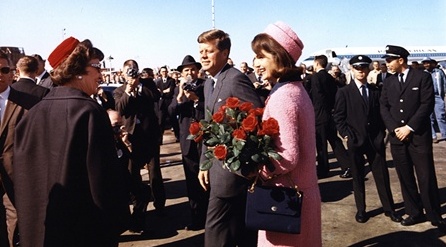Thousands of previously classified documents have been released this year, but no new suspects have surfaced in America’s most famous cold case: the Nov. 22, 1963, murder of President John F. Kennedy.
While it’s too early to fully assess information from the long-awaited document dump mandated by the JFK Assassination Records Collection Act of 1992, analysis of previously released files and testimonies points to a handful of suspects. Several names repeatedly crop up as likely participants in planning and carrying out the assassination and, even more strongly, in its cover-up.
Conspirators believed to have orchestrated the shooting in Dallas include CIA Operation Mongoose honcho William King Harvey; his buddy, mafioso Johnny Roselli; CIA black ops contractor David Sánchez Morales; and CIA psychological warrior David Atlee Phillips, a Latin American specialist who apparently acted as Lee Harvey Oswald’s case officer in 1963.
Before he died in 2007, Watergate mastermind E. Howard Hunt, a former CIA agent, identified Harvey, Morales, Phillips, Watergate burglar Frank Sturgis and an unidentified French sharpshooter as the brains and brawn behind the president’s killing.
A prime mover in the cover-up was Jack Ruby, the nightclub operator who shot Oswald in the Dallas Municipal Building basement two days after the president’s murder. As Ruby pumped a .38 slug into Oswald’s abdomen while he was handcuffed to a Dallas policeman, the shooting was broadcast live by NBC-TV.
A native of Chicago, Ruby functioned as an informant for both the FBI and the Dallas Police Department, and he associated with gamblers, pornographers, dope dealers and gunrunners from Las Vegas to New Orleans to Havana. Although researchers believe that his police contacts helped him pull off his very public murder of Oswald, it would be a great surprise if any of the new documents proved once and for all who or what motivated Ruby to sacrifice his own freedom by eliminating Oswald.
Cover-Up Conundrums
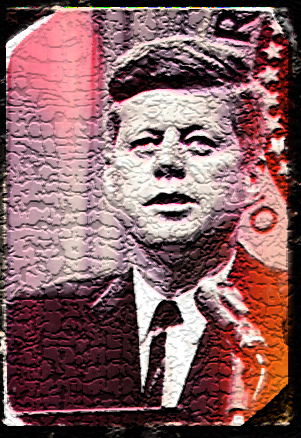
Such revelations are highly unlikely according to John Newman, author of the groundbreaking 1995 study of the accused assassin’s intelligence files, Oswald and the CIA. Scores of documents “were shredded exactly before the House Select Committee on Assassinations investigators started asking for them” in 1976.
“There’s no control of some things,” Newman said at JFK Lancer’s annual November in Dallas conference on Nov. 19, at the Adolphus Hotel in Dallas. “We have no idea, for instance, how many soft files (non-record working papers) were tucked away in desk drawers.”
But we know beyond a doubt that a handful of powerful men in Washington coordinated the cover-up, including former CIA director and Warren Commission member Allen Dulles; FBI director J. Edgar Hoover; and CIA counterintelligence chief James Angleton, who served as the agency’s liaison with the FBI as it investigated the Kennedy killing for the commission.
A less well-known CIA officer, George Joannides, continued to misdirect investigators during the late 1970s when he was called out of retirement to become the agency’s liaison to the House Select Committee on Assassinations.
Joannides was a curious choice for that task. Years later, declassified documents showed that in 1963 Joannides oversaw the anti-Castro Student Revolutionary Directorate in New Orleans. Accused assassin Lee Harvey Oswald had publicly clashed with the anti-Castro group that summer while he ostensibly represented the pro-Castro Fair Play for Cuba committee.
Just as Dulles and Angleton had the agency’s back during the Warren Commission investigation, Joannides stonewalled the HSCA. The foxes were guarding the henhouse.
Information on Joannides remains under lock and key.
Former Washington Post investigative reporter Jeff Morley painstakingly documents Joannides’ undercover work in New Orleans, as well as his assignment to undermine the work of the HSCA, in his 2016 eBook, CIA & JFK: The Assassination Files.
Meanwhile, Morley has sued the CIA for its Joannides records. “In the course of that litigation, the CIA acknowledged holding 295 documents about Joannides’ career that they say cannot be released in any form,” Morley said.
Trump and the Document Dump
This year’s JFK document dump is a mountain of molehills: thousands upon thousands of previously classified documents from the FBI, the NSA, congressional committees and, of course, the CIA. In fact, three-fourths of the documents originated with the agency.
“It’s all mixed together, and you can’t tell what’s what,” said Russ Baker, author of Family of Secrets: The Bush Dynasty, America’s Invisible Government, and the Hidden History of the Last Fifty Years.
Baker runs the website whowhatwhy.org, and his staff plans to examine each and every newly released file. “It’s a huge job,” Baker said. “And no other news organization in the world is looking into all of the documents as we are doing.”
The declassification of the files was mandated by a 1992 law which set Oct. 26, 2017, as the deadline for the National Archives and Records Administration to release records that had been redacted to protect methods and sources.
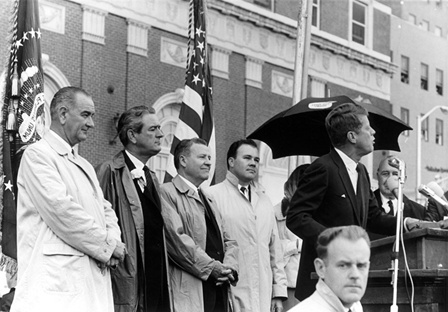
But Rex Bradford — who manages maryferrell.org, likely the largest single private repository of assassination information — characterized the 2017 process as “chaotic,” and said massive redactions remain. “The impression that only agent and informant names and the like are being withheld is mistaken,” he said. “Entire pages in some documents remain redacted.”
Thousands of documents remained classified or redacted when the JFK Assassination Records Collection Act was passed following the release of director Oliver Stone’s flamboyant assassination film, JFK (1992), A quarter-century later, as the release deadline approached this year, 441 files were released early, in July. Another 626 files came to light in October and November, and some 30,000 other documents that had been partially opened over the years were set to be released in full.
But on Oct. 26, President Donald Trump decided to hold back some documents for six months while the CIA and FBI pleaded with him to keep them secret, citing “national security, law enforcement, and foreign affairs concerns.”
Or because they could blow the covers of longtime spooks.
After 54 years, most people involved in the JFK investigation have retired and died. But San Francisco civil rights attorney Bill Simpich thinks he knows why Trump caved in.
“The wiretap operators in Mexico City, it’s quite possible that some of those people are still alive,” Simpich said at this year’s JFK Lancer conference. Alleged assassin Oswald reportedly visited the Cuban Consulate in Mexico City some seven weeks before the president’s shooting, and CIA operatives are believed to have tape recorded his telephone calls there.
Simpich authored the book State Secret: Wiretapping in Mexico City, Double Agents, and the Framing of Lee Oswald, which is available for free at maryferrell.org.
Regardless of why Trump decided to hold back documents, researchers remain frustrated. Dan Hardway, a former investigator for HSCA, is one of them.
“There has been no explanation of why the intelligence community has requested this delay,” he wrote in a Nov. 3 letter to a U.S. senator. “It was made in secret. What kind of pressure have they brought to bear? How can they force a president to so blatantly disregard the law?”
Larry Hancock, a longtime Cold War historian from Oklahoma and author of the JFK tell-all, Someone Would Have Talked, agrees that Trump is catering to the intelligence community. “The quantity of redaction is clearly not what Congress intended or what the president promised, so at this point the release does not appear to be in compliance with congressional intent regardless of how you spin it,” he said. “And as far as NARA is concerned, these redactions are the president’s prerogative.
More Questions Than Answers
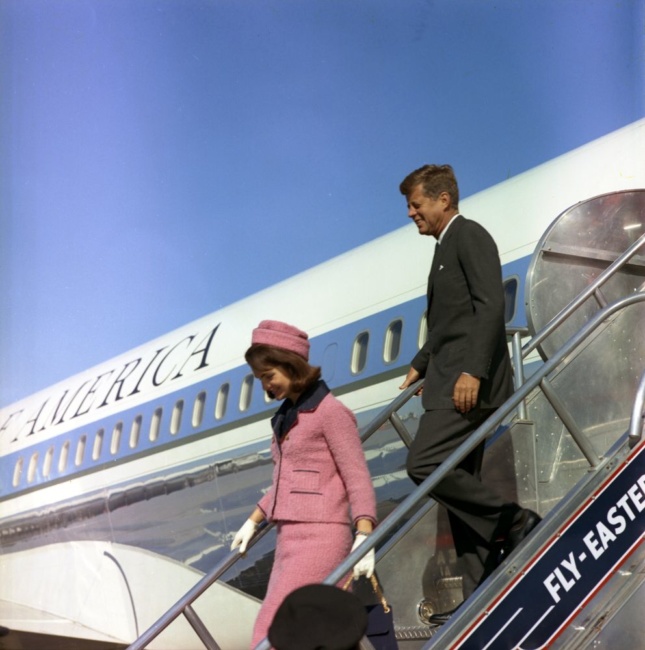
The newly available documents are a mishmash. Hundreds of the freshly opened files involve post-assassination Soviet defector Yuri Nosenko, including audiotapes and transcripts, many in Russian. Such material illustrates the famous paranoia of James Jesus Angleton, the CIA counterintelligence chief from 1954 to 1975, who obsessively feared Soviet infiltration.
Angleton’s Special Investigations Group office had maintained Oswald’s “201 personality file” since 1960. At the Lancer conference, Newman cited evidence of agency interest in Oswald even before the ex-Marine’s dubious defection to Russia in 1959, suggesting that Angleton knew things about Oswald that were not even shared with the CIA’s own Soviet Division. In any case, Angleton’s counterintelligence people tracked Oswald closely up until the weeks prior to Kennedy’s murder in Dallas.
Fortunately, we have a new biography of the mercurial Angleton: The Ghost: The Secret Life of CIA Spymaster James Jesus Angleton by former Washington Post investigative reporter Jeff Morley. The son of an Office of Strategic Services officer and a Mexican mother, Angleton is depicted as a man haunted by the threat of KGB infiltration of U.S. intelligence operations, a man who remained loyal to former CIA director Allen Dulles, a man who went to great lengths to keep secret the CIA’s pre-assassination knowledge of the accused assassin. During his early years with the agency, Angleton earned Dulles’ undying trust by conducting sensitive operations in Eastern Europe and Israel.
A 2015 book by San Francisco investigative journalist David Talbot, The Devil’s Chessboard: Allen Dulles, the CIA, and the Rise of America’s Secret Government, indicts Dulles for orchestrating the Kennedy assassination at the behest of corporate leaders such as David Rockefeller, who perceived the president as a threat to Third World corporate expansionism, specifically into Latin America. After the assassination, Dulles lobbied Lyndon Johnson to be appointed to the Warren Commission, which he dominated.
Angleton biographer Jeff Morley spoke at the November in Dallas conference, as did Baker, Simpich, Hancock and others. “Angleton was an ally of Bill Harvey,” Simpich said. The pistol-packing, hard-drinking Harvey partnered with special ops Col. Ed Lansdale to lead Operation Mongoose, a covert operation against the Castro government. “And Angleton was an opponent of the Kennedy brothers.”
Harvey shared that animosity. His widow, C.J. Harvey, called JFK and his family “scum.” Angleton and Harvey had both been involved in assassination plots against Castro.
In the fall of 1962, Hancock asserted at the conference, CIA deputy director of plans Richard Helms directed Harvey to activate a new executive action program, a death squad dubbed “the magic button.” Hancock studied Harvey’s notes from those meetings, an eye-opening list of murder dos and don’ts, many utilized in the JFK matter, such as “blame the Soviets” and set up a patsy with “forged and backdated documents.”
Angleton was “deeply involved” with anti-Castro Cuban exiles, Hancock said, and had closely examined the state of Cuban intelligence agencies following the Bay of Pigs.
On May 23, 1963, six months before the bullets echoed over Elm Street, Angleton wrote a memo regarding Cuba and mentioned the ease with which an American citizen might secure a visa for travel to Havana at the Cuban Consulate in Mexico City. Oswald apparently enacted that exact scenario when he visited the Mexican capital some seven weeks before the assassination.
To summarize his view of Angleton’s culpability, Morley writes, “Dulles wanted to steer the (Warren) commission’s investigation away from the CIA, and Angleton was obliging. A conspiracy theorist would say Angleton masterminded the JFK cover-up. A prosecutor would say he obstructed justice. A bureaucrat would say he covered his ass. In every practical sense, his actions were invisible. In the tragedy of Dallas, Angleton played a ghost.”
So, researchers have their eyes peeled for more on Angleton and his officers in the new releases, but have so far been stymied. “Information on Angleton’s activities were dispersed throughout the agency,” said British researcher Malcolm Blunt. “There are no official Angleton files anywhere at the CIA.”
None. And Angleton held a top-level post for 13 years!
New Leads To Pursue
A few intriguing tidbits have surfaced. The mayor of Dallas in 1963, Earle Cabell, had been granted a CIA security check and clearance. His brother was Gen. Charles Cabell, the CIA’s second-in-command under Allen Dulles before Kennedy fired them after the Bay of Pigs. Earle Cabell had been in charge of JFK’s motorcade on Nov. 22, and it was his police department that failed to protect Oswald from Ruby. “So that does raise some questions,” noted Dick Russell, author of On the Trail of the JFK Assassins.
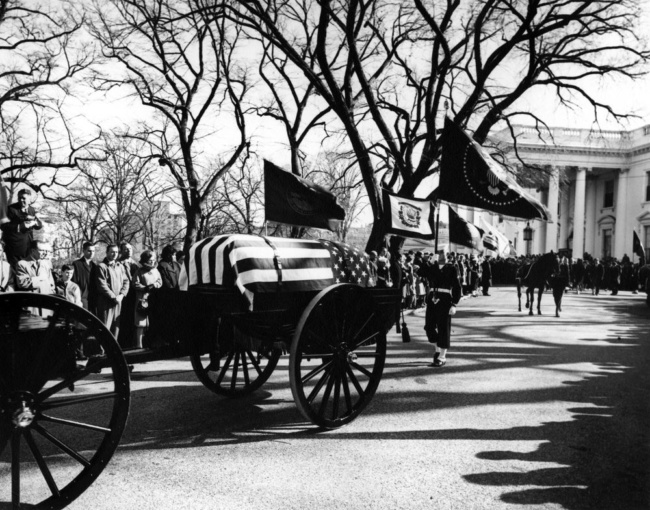
Another revelation sheds light on a violent anti-Castro group known as Alpha 66, a memo from Mongoose leader Lansdale ordering a hold on Alpha 66 and its sabotage of Cuban shipping. “So here we have a document suggesting that either Lansdale was totally clueless about Alpha 66 or that the CIA did have some sort of highly cutout operational control over them,” Hancock noted. “Which tells us nothing about the JFK assassination per se but might tell us something very new about what would have been a deeply buried CIA operation.”
And the new file names have identified the Dallas IRS informant – Robert Vanderslice – who officially reported that Ruby had advance knowledge that something would happen in the motorcade. In fact, on the morning of Nov. 22, 1963, Ruby
invited Vanderslice to come down and “watch the fireworks,” as reported in Larry Hancock’s book, Someone Would Have Talked.
Alan Dale, an editor at the Assassination Archives and Research Center (aarclibrary.org), emceed this year’s Lancer conference. He views the document dump as proof that “there are a lot more cards in the deck than we realized. Now it’s up to serious, disciplined researchers to put together the pieces.”
Dale footnotes his optimism with a note of caution. “Documents don’t always mean what they say or say what they mean. What they purport to reveal is seldom complete and may not be accurate, perhaps even false, especially when they are issued by intelligence agencies whose tradecraft includes deception and maintenance of ‘plausible deniability.’”
This year’s document dump may be a mountain of molehills, but there just could be a rat lurking in one of them — if only we dig deeply enough.
Continue Reading








